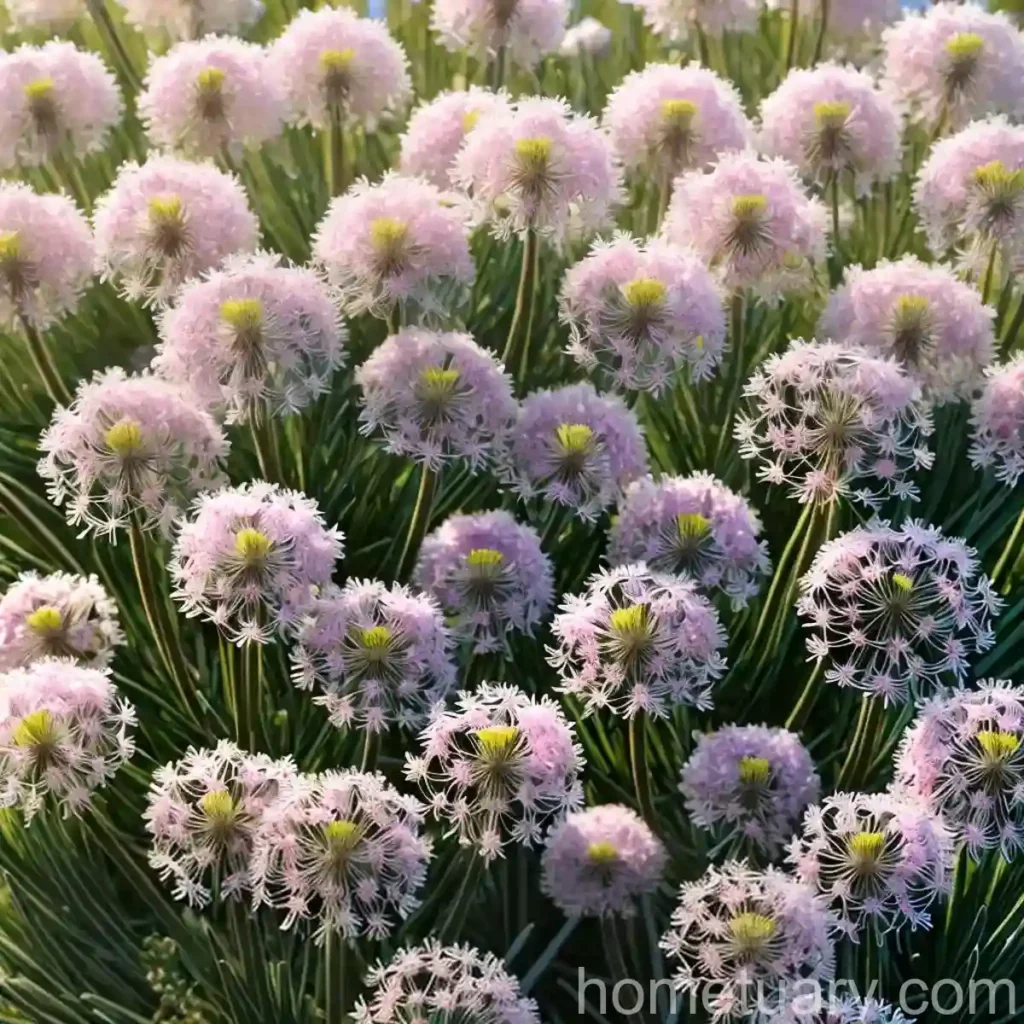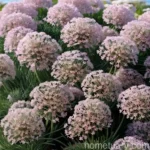The Beauty of Sea Thrift (Armeria maritima ‘Rubrifolia’)
Sea thrift, also known as Armeria maritima ‘Rubrifolia,’ is a stunning plant that captures the allure of coastal landscapes. Its vibrant blooms and unique foliage make it a favorite among gardeners seeking to add a touch of seaside beauty to their gardens. In this comprehensive guide, we will delve into the world of sea thrift, exploring its cultural significance, uses, care tips, and much more.
What is Sea Thrift (Armeria maritima ‘Rubrifolia’)?
Sea thrift (Armeria maritima) is a perennial plant that belongs to the Plumbaginaceae family. Native to the coastal regions of Europe, including the British Isles, it has become a beloved addition to gardens around the world for its charming appearance and adaptability to various growing conditions. The ‘Rubrifolia’ variety is particularly renowned for its striking red or bronze foliage, adding an extra dimension to its visual appeal.
Key Takeaways
Before we delve deeper into the world of sea thrift, let’s take a brief look at some key takeaways for this remarkable plant:
- Cultural Significance: Sea thrift is deeply rooted in coastal culture and has historically been associated with seaside landscapes.
- Uses: It is widely used in landscaping, coastal gardens, rock gardens, container gardening, and as a groundcover plant.
- Care Tips: Providing well-draining soil, ample sunlight, and moderate watering are crucial for its healthy growth.
- Unique Features: The ‘Rubrifolia’ variety is distinguished by its captivating red or bronze foliage, making it a standout addition to any garden.
- Attracts Wildlife: It is known for attracting pollinators like butterflies and bees, enhancing the ecological diversity of the garden.
Now, let’s delve into the various aspects of sea thrift, from its cultural significance to its care requirements and common pests and diseases.
Cultural Significance of Sea Thrift
Coastal Symbolism
Sea thrift’s association with coastal regions is deeply ingrained in its cultural significance. It is often found naturally occurring on cliffs and dunes, adding vibrant splashes of color to these rugged landscapes. Its resilience in the face of harsh coastal conditions has made it a symbol of strength and adaptability, embodying the spirit of coastal communities.
Historical Significance
Throughout history, sea thrift has been celebrated for its enduring presence in the face of coastal elements. It has featured in folklore and traditional coastal customs, further solidifying its place as an emblem of the sea.
Uses of Sea Thrift (Armeria maritima ‘Rubrifolia’)
Sea thrift is a versatile plant with a wide range of uses in gardening and landscaping. Let’s explore some of its primary uses and the factors that contribute to its successful growth.
Water
Moderate watering is crucial for sea thrift, especially during its growing season. It is important to provide consistent moisture, allowing the soil to dry out slightly between watering sessions to prevent waterlogging. However, it can also tolerate dry conditions once established, making it suitable for coastal gardens and drought-tolerant landscapes.
Sunlight
Sea thrift thrives in full sun, making it an excellent choice for bright, open areas in the garden. Adequate sunlight is vital for its overall health and is essential for promoting vibrant blooms and robust foliage.
Fertilizer
While sea thrift is not particularly demanding when it comes to fertilization, providing a balanced, slow-release fertilizer in spring can support its growth and blooming. Over-fertilization should be avoided, as it can lead to excessive foliage at the expense of flower production.
Soil
Well-draining soil is crucial for the success of sea thrift. It prefers sandy or gritty soil with good drainage to mimic its natural coastal habitat. Amending the soil with organic matter can help improve its texture and drainage.
Pruning
Regular deadheading of spent flowers can encourage continuous blooming and a neat, tidy appearance. Additionally, trimming back the foliage after flowering can promote new growth and maintain the plant’s overall vigor.
Propagation
Sea thrift can be propagated from seed or division. Sowing seeds in well-draining soil in early spring or dividing established clumps in early spring or fall are viable propagation methods.
Planting Sea Thrift in Containers
Sea thrift’s adaptability to container gardening makes it a popular choice for those seeking to add a coastal flair to their patio, balcony, or garden. The ‘Rubrifolia’ variety, in particular, adds a striking visual element to container designs. When planting sea thrift in containers, consider the following factors:
- Container Selection: Choose a container with ample drainage holes to support the plant’s preference for well-draining soil.
- Soil: Select a well-draining potting mix, or amend regular potting soil with sand or perlite to improve drainage.
- Sunlight: Position the container in a location that receives at least 6 hours of sunlight per day for optimal growth.
- Watering: Monitor the moisture levels in the container, ensuring that the soil remains slightly dry between waterings to prevent waterlogging.
Popular Varieties of Sea Thrift
Sea thrift is available in a variety of cultivars, each offering its own unique characteristics and visual appeal. Some popular varieties include:
- Armeria maritima ‘Splendens’: Known for its vibrant pink flowers and compact growth habit.
- Armeria maritima ‘Alba’: Features white flowers that stand out against its dense, grass-like foliage.
- Armeria maritima ‘Dusseldorf Pride’: Showcases deep pink flower heads and a robust, clump-forming growth habit.
The ‘Rubrifolia’ variety stands out for its captivating red or bronze foliage, adding a touch of warmth and richness to garden compositions.
Common Diseases Affecting Sea Thrift
While sea thrift is generally resistant to many common diseases, it can be susceptible to certain issues under unfavorable growing conditions. Some common diseases that may affect sea thrift include:
- Powdery Mildew: This fungal disease can manifest as a white, powdery substance on the plant’s foliage, leading to distorted growth and reduced vigor.
- Root Rot: Prolonged periods of waterlogging can cause root rot, leading to wilting, yellowing foliage, and eventual decline of the plant.
- Leaf Spot: Characterized by dark spots on the foliage, leaf spot can affect the plant’s overall aesthetic and reduce its vitality.
Implementing proper cultural practices, such as providing adequate air circulation and avoiding overwatering, can help prevent these diseases and maintain the plant’s health.
Common Pests Affecting Sea Thrift
Sea thrift is relatively resistant to pest infestations, but it may occasionally encounter the following pests:
- Aphids: These small, sap-sucking insects can appear on the plant’s new growth, causing distorted leaves and a decline in overall vigor. They can be controlled with insecticidal soap or horticultural oil.
- Slugs and Snails: These voracious pests can feed on the plant’s foliage, leading to unsightly damage. Implementing slug and snail control measures, such as beer traps or copper tape, can help protect the plant from these pests.
Vigilance and prompt intervention can help prevent pest populations from reaching damaging levels and safeguard the plant’s well-being.
Botanist’s Tips for Growing Sea Thrift (Armeria maritima ‘Rubrifolia’)
To ensure the successful growth of sea thrift, consider the following tips from botanists and gardening experts:
- Coastal Emulation: Mimic the plant’s natural coastal habitat by providing well-draining, sandy soil and ample sunlight.
- Moderate Care: Avoid over-fertilizing or overwatering, as sea thrift thrives in moderate growing conditions.
- Maintenance: Regular deadheading and light pruning can encourage continuous blooming and maintain the plant’s compact form.
- Dividing Clumps: Periodically dividing established clumps can promote the plant’s vigor and prevent overcrowding.
By incorporating these tips into your cultivation practices, you can create an optimal environment for sea thrift to thrive.
Fun Facts About Sea Thrift
- Coastal Resilience: Sea thrift’s ability to withstand coastal winds and salt spray makes it a resilient and enduring addition to coastal landscapes.
- Ecological Importance: Its nectar-rich flowers attract pollinators, contributing to the ecological diversity of the garden.
- Symbolism: In folklore and mythology, sea thrift has been associated with themes of strength, endurance, and seaside beauty.
Links to External Resources
For further information on sea thrift care, cultivation, and landscaping uses, consider exploring the following external resources:
- RHS Guide to Growing Sea Thrift
- Coastal Gardening with Sea Thrift
- The National Trust’s Coastal Planting Guide
In conclusion, sea thrift (Armeria maritima ‘Rubrifolia’) is a captivating plant with a rich cultural heritage and a myriad of uses in garden design. Its adaptability to various growing conditions, striking appearance, and low-maintenance nature make it a valuable addition to coastal-themed landscapes, rock gardens, and container designs. Whether you’re seeking to enhance your garden with a touch of coastal charm or cultivate a resilient plant in challenging conditions, sea thrift offers a wealth of possibilities. With the right care and consideration for its natural preferences, this remarkable plant can grace your garden with its enduring beauty.















